"A good education is a gift for life."
The benefits can start from birth – so let's give every child the chance to be bilingual!
Helping build a bilingual future
For me, seeing young children switch languages effortlessly looks like a miracle – so helping children develop that skill is a great joy!
Supporting teachers
Creating new works is fun, but the best part is seeing how teachers add their dynamic energy to bring those lesson plans to life!
Excellence with innovation
Children deserve the best possible quality, so whether I am designing the structure of a course, creating activity pages, game apps, stories or a song for the Olympics, I aim high!

about

about

Music and song
Singing was my main hobby for many years and is probably why I find song writing second nature! The best songs are those that take the least time to compose because they come out fully formed – words, music and emotion already balanced in my mind. That combination is necessary even when writing songs for toddlers. In my experience, if there is no emotional hook, a song will not be so effective.
Language and more
I love learning languages so, following my MA in Modern Languages from St. Hilda’s College, University of Oxford, I worked and lived abroad for over 13 years. I also watched my own children become bilingual by living in a second language environment, which has been invaluable experience in writing English courses for children. Communication can happen in many ways – words, music, pictures, films, gestures, signs, dance and more. That’s why my English learning courses integrate music, songs, games, craft and acting into the context of the storylines. It creates ‘contextual language immersion’.

Cycling and walking
As a team-player, I like to do sport with other people too. Even the walking and cycling I do now are not just for fitness or thinking alone, but also for sharing – and I have crossed quite a few countries that way! On a bike or walking, you are always open for a conversation or a wave, so I find this a much better way to get to know people and places when I travel.
Language and more
I love learning languages so, following my MA in Modern Languages from St. Hilda’s College, University of Oxford, I worked and lived abroad for over 13 years. I also watched my own children become bilingual by living in a second language environment, which has been invaluable experience in writing English courses for children. Communication can happen in many ways – words, music, pictures, films, gestures, signs, dance and more. That’s why my English learning courses integrate music, songs, games, craft and acting into the context of the storylines. It creates ‘contextual language immersion’.

Music and song
Singing was my main hobby for many years and is probably why I find song writing second nature! The best songs are those that take the least time to compose because they come out fully formed – words, music and emotion already balanced in my mind. That combination is necessary even when writing songs for toddlers. In my experience, if there is no emotional hook, a song will not be so effective.

Cycling and walking
As a team-player, I like to do sport with other people too. Even the walking and cycling I do now are not just for fitness or thinking alone, but also for sharing – and I have crossed quite a few countries that way! On a bike or walking, you are always open for a conversation or a wave, so I find this a much better way to get to know people and places when I travel.

courses

courses
In 2000, I launched my first course for children aged tiny to ten with the strap line for children everywhere. There is now a range of courses for children from birth to ten to help them learn speaking, singing, playing and first reading in English - and to build a bilingual future.
Universal Preschool Course

Baby Beetles – UPC Starter Level
This course was created so that children could begin contact with English as soon as possible! The songs can be used from birth at home, the HD animated films can be watched from from ‘sitting up’ and the Starter Level (first year) of the preschool course can begin on entering nursery. The great feature of the Universal Preschool Course is that there are versions for qualified English teachers to teach (PLUS) and for non-English speaking class-teachers to lead (Standard).


Tom and Keri UPC Levels A and B
These new characters match the expanding world of pre-schoolers, both at home and at preschool. Levels A and B provide two years of material for home and classroom learning, beginning anytime from age 3, (though usually after the Baby Beetles). Learning starts in the context of simple, engaging adventures in HD animations with songs that feel like entertainment. In fact, they are carefully structured around my early preschool syllabus! These levels are also available in PLUS and Standard versions.

Oxford University Press

Oxford Playtime
Oxford Playtime is a three-year course that I wrote for Oxford University Press and which is sold worldwide. It offers many hours of teaching material for pupils aged 3 to 5, including extra units for specialist English schools (Playtime Plus). The course includes double the normal quantity of songs with both a story song and a lexical set song in each unit. It is a story-centred course with simple 2D animations.

Cambridge University Press
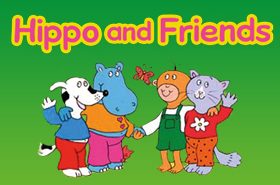
Hippo and Friends
Hippo and Friends is a three-year course for pupils aged 3- 5 in preschools with more limited English teaching hours. I wrote it for Cambridge University Press as my first preschool course with full lesson plans. It is song-centred with simple stories and clear lesson instructions. Launched in 2004, it has sold in more than 40 countries!

FLTRP

Phonics Wonderland
This first phonics and reading course is for children from aged 5-7. Launched and tested by FLTRP (Foreign Languages Teaching and Research Press) in China, it is now a best-seller that is ready to be offered internationally. Complete with songs, animations, pupil’s books, lesson plans and flashcards, it takes children from meeting the letters to reading first stories – including using irregular phonics. Gentle and very clear, it can be used by schools and after-school language classes.

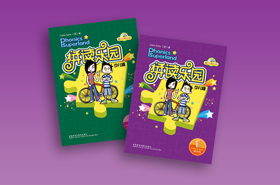
Phonics Superland
This phonics and reading course is for children from aged 8-10. Launched and tested by FLTRP (Foreign Languages Teaching and Research Press) in China, it is complete with songs, animations of the stories, pupil’s books, lesson plans and flashcards. It takes children from meeting the letters to reading first stories – including using irregular phonics. Energetic and clear, it can be used by schools and after-school language classes.

Collins

Little Red Dragon
I wrote these 12 unique readers with songs to take children on adventures with English using a few words. Core lexical sets are built into the energetic story-songs to help pupils remember the words in the contexts of the stories. I call this approach my SongStories™ technique. Extra puzzles and activities are included in the books so that children learn by reading, singing and doing! The picture dictionary page helps prompt beginner readers too. Published by Harper Collins, it is an e-reader series. There is also a musical play script to accompany this series.
There are two versions of the script, one for schools and one for acting groups to perform for schools. This pack contains:
- Lesson plans for teachers to help them present the readers
- Lesson plans for teachers to help them prepare the musical play with their pupils
- Play scripts
- Printable sheets to use as props
Stories: https://collins.co.uk/products/9780008388225
Play and teacher's notes: https://collins.co.uk/products/9780008388232


method

method

It is very important to me that the courses I write are structured according to a clear methodology. That is why I developed the Spiral Language System and explained it in my handbook, How to help your class learn English. This way, I know exactly why each word is used and how each layer builds language acquisition. Language is not just about learning new words and phrases but about understanding the context in which each word and phrase can be used. Bilingualism for children means feeling themselves to be bilingual and being able to operate in both languages. To achieve this, they need to meet the additional language in multiple ways, just like the home language.
Supporting teachers
How to help your class learn English
There are many aspects to being a good teacher. In addition to classroom control, knowing your subject and relating to your class’ age group. I believe that it helps teachers to understand how children learn and how the skill-subject, English, fits in to early education as a whole. These points are included in my guide for teachers, How to help your class learn English. Nominated for an ELTon in 2012 for excellence in teacher resources, it underpins my approach and aims to support teachers with practical tips as well as planning suggestions and academic research.


Supporting parents
How to help your child learn English
To learn a skill, you need to practise daily, so wherever possible, I add home-learning materials to my school courses. Many parents want to support their child’s learning, but do not know how. In response to questions from many mums and dads, I wrote this simple guide in 2010 that has now been translated into a number of languages. It is easy to read and full of the information and tips that I hope will reassure parents.



awards

awards

Shortlisting 2018
British Council English Language Teaching (ELTons)
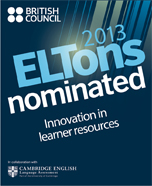
Nomination:
Innovation in Learner Resources


Nomination:
Excellence in Teacher Resources
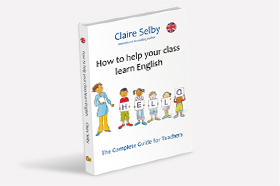

Nomination:
Innovation in Courses

Educational awards

Gold Medal:
Best Educational Product for children in the Russian Federation
Gold Medal:
for Tom and Keri at the Moscow International Book Fair


Best animation for children 2012
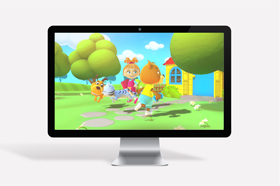

Beijing Olympic award





